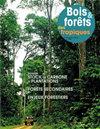用ISSR标记分析了10个摩洛哥四环虫居群的遗传多样性
IF 0.6
4区 农林科学
Q3 FORESTRY
引用次数: 2
摘要
四叶草是摩洛哥最重要的森林物种之一。偶尔也在马耳他和西班牙发现,对不同的生物气候条件表现出显著的适应性。然而,该物种正受到人为破碎化、伐木和当局忽视的影响,这可能导致这种资源不可挽回的损失。本研究对10个摩洛哥齿形舌蝗居群的遗传多样性和遗传结构进行了分析。使用15个ISSR标记。共产生271个多态性片段,平均每个引物有18.06个多态性片段,多态性率为79.59%。129个个体表现出较高的遗传多样性(Hs = 0.221;Ht = 0.254)和群体内85%的遗传变异。但遗传分化水平较低(Gst = 0.13),这与Mantel试验显示的遗传距离与地理距离缺乏相关性一致,导致基因流动水平较高(Nm = 3.294)。基于PCoA和邻域联结方法,10个种群在大陆性和海洋性气候的影响下聚类。与其他针叶树相比,目前的遗传多样性和种群结构格局表明,中国针叶树是一个重要的基因库,需要有效的保护策略。本文章由计算机程序翻译,如有差异,请以英文原文为准。
Genetic diversity of ten Moroccan populations of Tetraclinis articulata as revealed by Inter Simple Sequence Repeat (ISSR) markers
Tetraclinis articulata (Vahl) Masters is one of Morocco's most important forest species. It is also found occasionally in Malta and Spain, showing significant adaptability to different bio-climatic conditions. However, the species is being affected by anthropogenic fragmentation, logging and neglect from authorities, which could lead to the irretrievable loss of this resource. In this study, the genetic diversity and genetic structure of ten Moroccan populations of T. articulata were assessed. Fifteen Inter-Simple Sequence Repeat (ISSR) markers were used. These generated 271 polymorphic fragments with an average of 18.06 per primer and showed 79.59% of polymorphism. The 129 individuals revealed a high level of genetic diversity (Hs = 0.221; Ht = 0.254) and 85% of genetic variation within populations. However, the genetic differentiation level was low (Gst = 0.13), which is consistent with the lack of correlation between genetic and geographic distances revealed by the Mantel test, resulting in a high level of gene flow (Nm = 3.294). Based on PCoA and neighbour-joining methods, the ten populations clustered under the effect of continental and marine climates. Compared with other conifers, the current genetic diversity and the pattern of T. articulata population structure indicate an important gene pool requiring efficient conservation strategies.
求助全文
通过发布文献求助,成功后即可免费获取论文全文。
去求助
来源期刊

Bois et Forets Des Tropiques
FORESTRY-
CiteScore
1.50
自引率
16.70%
发文量
31
审稿时长
>12 weeks
期刊介绍:
In 1947, the former Tropical Forest Technical Centre (CTFT), now part of CIRAD, created the journal Bois et Forêts des Tropiques. Since then, it has disseminated knowledge and research results on forests in intertropical and Mediterranean regions to more than sixty countries. The articles, peer evaluated and reviewed, are short, synthetic and accessible to researchers, engineers, technicians, students and decision-makers. They present original, innovative research results, inventions or discoveries. The journal publishes in an international dimension. The topics covered are of general interest and are aimed at an informed international audience.
 求助内容:
求助内容: 应助结果提醒方式:
应助结果提醒方式:


